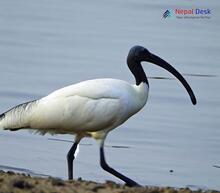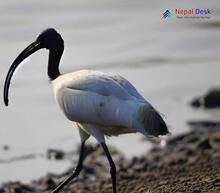Nepal, a charming country nestled between India and China, is known for its vibrant culture, bustling cities, and picturesque landscapes. What many may not realize is that it's also home to an abundance of diverse wildlife. Among these fascinating creatures is the Threskiornis genus, a group of wading birds within the Threskiornithidae family. Let us embark on a journey to profile these captivating birds and explore how Nepal provides the perfect habitat for them.
Meet the Threskiornis Genus
The Threskiornis genus, commonly referred to as Ibises, consists of medium-sized wading birds with long legs, curved bills, and rounded wings. They are typically found near water sources such as rivers, marshes, and lakes. With their slender beaks and specialized feeding techniques, they primarily feed on crustaceans, insects, and other small aquatic animals.
While several species belong to the Threskiornis genus, one that has captured the attention of birdwatchers in Nepal is the Black-headed Ibis (Threskiornis melanocephalus). This remarkable bird sports a glossy white body with striking black feathers on its head and neck.
Why Nepal Provides the Perfect Habitat
Nepal's diverse landscapes offer an array of wetland habitats ideal for the Threskiornis genus to thrive. The country boasts numerous rivers and marshlands that provide ample food sources and breeding grounds for these fascinating birds. Furthermore, Nepal's conservation efforts have taken great strides in recent years through the establishment of protected areas and wetland reserves. This focus on conservation allows for these unique birds to flourish within their natural habitats.
Exploring Their Unique Behaviors
Besides their physical characteristics, the Threskiornis genus exhibits intriguing behaviors that further pique our interest. Interestingly, these birds have been known to engage in cooperative breeding, where multiple individuals contribute to nurturing the young. Additionally, their social structure is evident through their communal roosting and feeding habits.
Despite their secretive nature in nesting locations, members of the Threskiornis genus are quite vocal when gathered in large colonies. Observations of their vocalizations have led researchers to believe that these sounds play a crucial role in maintaining social bonds among the group.
Final Thoughts
The Threskiornis genus, with its alluring characteristics and behaviors, captivates birdwatchers and wildlife enthusiasts alike. As we continue to learn more about this intriguing group of wading birds, let us remember the importance of preserving their habitats so future generations can appreciate the beauty of the Threskiornis genus in countries like Nepal. Keep exploring the natural wonders of this enchanting land and join us in celebrating its captivating feathered residents.



